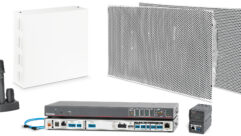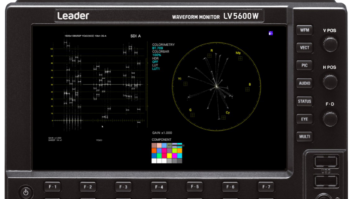Systems integration appearing nowAt theaters, homes and offices near you, systems integration isn’t the wave of the future; it’s the wave of today.
Dec 20, 1996 12:00 PM,
John StiernbergStiernberg is principal of Stiernberg Consulting, Woodland Hills, CA.
Systems integration is not a new phenomenon; in just two years, it has moved from leading edge to mainstream, providing electronic contractors and consultants with new challenges and business opportunities.
Systems integration is the unification of the four electronic subsystems into one system sharing a user interface. The four subsystems are entertainment, communications, life safety and environmental control; all the electronic devices in a commercial or residential building fit into one of these four subsystem categories. When a system is fully integrated, the end-user can control and monitor any device from a central control, remote control or any device on the network.
Why bother with systems integration? So much is going on in a building’s electronic subsystems that even a relatively sophisticated user has a hard time keeping up with the technology. But using an integrated system benefits the end user in seven significant ways:
* Ease of use: A properly integrated system is simple to learn, operate and maintain.* Aesthetics: The system does not detract from the building decor and is usually invisible.* Performance: The system is capable of the functions important to the user and is configurable or modular, allowing for easy changes and upgrades.* Reliability: The system never breaks, and it has a strong warranty.* Prestige: A well-designed system provides the latest features and technology.* Convenience: Computer control and automation features allow the system to function on the user’s personal schedule – install it and forget about it.* Long-term cost savings: Software upgrades will eventually cost less than swapping out hardware components. This is especially relevant in the commercial market, where buildings are reconfigured relatively frequently.
Who’s playing the role?The field is still relatively new, with only a small pool of experienced talent to draw from, including the following people:* Audio-video contractors.* Consultants and specifying engineers.* Computer network and communications specialists.* Security dealers.* Lighting designers.* Building automation specialists.* Telephone, utility and cable television specialists.
All of these people come to systems integration with a different point of view based on their backgrounds and experiences. As systems integration becomes a discipline unto itself, the bias or earlier subsystem experience of the integrator becomes less important. The ability to integrate all subsystems on time and on budget becomes more important.
The systems integrator deals with the end-user, the building owner, facilities manager or homeowner, relative to all aspects of the design, installation and maintenance of the building’s electronic systems. The integrator needs to understand and deal with many factors:
* The functional nature and performance of the subsystems.* The workstyle or lifestyle of the building owner and all potential system users.* The client’s budget.* The project schedule.* The technical nature of existing system components that may need to be incorporated in the integrated system.* Standards, building codes, regulatory and compatibility issues.* Future customer needs, including compliance with emerging trends and safety regulations.
Taking into account these requirements, a successful systems integrator has the following 10 characteristics:* Technically fluent in the four electronic subsystems.* Understands computer control technology, standards, protocols and networking.* Understands the user interface technically, in regard to choice of components and media, and ergonomically, by matching the options to the needs of the individual client.* Understands the contracting business, including the economic models driving the activities of builders, mechanical contractors, electrical contractors and electronic specialty contractors.* Has strong project management skills.* Talks comfortably with the design community: architects, interior designers and specialty consultants, such as those in lighting or home theater.* Talks comfortably with the trades: builders, decorators, inspectors and specialty subcontractors.* Financially capable: able to manage cash flow, insured and bonded.* Possesses strong interpersonal skills, including adaptability and patience.* Able to market and sell services: system design, installation labor, training and maintenance.
Yes, systems integration is becoming a discipline unto itself. As the equipment and the customer base become more sophisticated, the systems integrator’s role becomes increasingly important.
Myths and realitiesIndustry naysayers may talk about why the old way is better and why systems integration need not be taken seriously as a business discipline and opportunity. Here are some of the common myths and realities.
* Myth 1: Standards are necessary before systems integration can become a reality.* Reality: The lack of a single technical standard, such as Ethernet, CEBus or BACnet, actually validates the role of the systems integrator. Subsystems can be made to work together in a variety of ways. The systems integrator can assess today’s client needs and design a system offering functionality and the ability to upgrade as standards emerge.
* Myth 2: Systems integration and building automation are the same thing.* Reality: Automation refers to the scheduling of events that occur on the building’s subsystem network. Whether powerline control, twisted pair or other media, today’s automated systems most frequently combine only the life safety and environmental control functions. For example, when home automation systems claim to control entertainment components, use is limited to on-off functions, thus limiting capability and appeal to active system users. Therefore, building automation is a subset of systems integration.
* Myth 3: A set-top box can do everything. The industry is going “plug and play” – read “do it yourself” – so a systems integrator need not apply.* Reality: We’re not there yet. Although experiments are underway to use cable modems and set-top controllers for more than just entertainment delivery, the current generation of devices does not pretend to be a systems integration controller.
* Myth 4: Customers won’t pay for project management. They are only interested in the lowest prices on equipment and labor.* Reality: A small segment of the market can handle project management duties in addition to full-time jobs or other activities. These people play the role of their own general contractor when building a new home. Few, if any, of these understand the electronics of the building and know how to play the role of systems integrator. Customers who object to paying for service need to be sold carefully and persistently, starting with an overview of what needs to be done and the benefits of using an outside expert. If they still don’t get it, it may be better to back away from the project.
* Myth 5: The electrical contractor can handle it.*Reality: High-voltage and low-voltage contracting are different disciplines. Although some electrical contractors are investigating systems integration as a business opportunity, few are likely to acquire the necessary skills.
* Myth 6: Architects and interior designers are useless to electronic contractors. They are arrogant, technically inept and don’t want to work with our industry.* Reality: Architects and interior designers are vital to the success of most commercial projects and an increasing number of residential jobs. First, they often own the customer. That is, the client has already retained the architect or designer and has developed rapport. In addition, some clients assume the architect will handle all project management duties, including supervision of subcontractors. Although electronic contractors have a seemingly endless supply of horror stories about the design community, most problems can be prevented with intervention and education.
What’s a contractor to do?So you’ve heard about systems integration but haven’t taken the plunge yet? Most S&VC readers come from an entertainment, communications or life-safety background. As an electronic contractor or system designer specializing in one or two of the subsystem categories, you have three choices: lead, follow or get out of the way.
Taking a leadership role suggests becoming a systems integrator. Following, an equally valid business position, implies continuing as a subsystem specialist and working with systems integrators as a subcontractor. Getting out of the way implies going out of business or into another field.
Systems integration is here to stay. It is a fast-growing discipline recognized across the market as a significant element in today’s contracting business. You have the opportunity to lead – Seize it!










